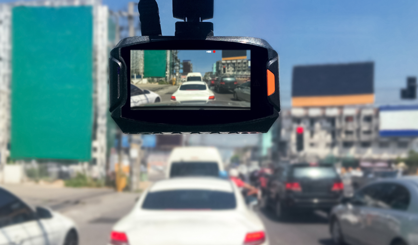Sign up for blog updates

Protecting Drivers & Getting the Truth on Tape
This episode of What’s Brewing takes inspiration from our earlier blog post, Get the Truth on Tape, written by IAT Loss Control Specialist Dewayne Reeder. In it, we explored how dash cams and telematics can help truck drivers protect themselves in lane-change and side-swipe incidents.
Host Nicole Kirby, AVP of Marketing & Analytics for Commercial Transportation at IAT, sat down with Dewayne and Mark Hansen, a Claims Analyst at IAT, to dig deeper into how these technologies impact safety, liability, and claims outcomes.
Tune in to the episode here.

Why Cameras Matter More Than Ever
“Help us defend you” — that’s how Dewayne sums it up. With litigation increasing and staged accidents on the rise, cameras can be a critical truth-finding tool. Mark notes that while verbal statements once carried weight, today they’re often unreliable. Dash cams, side-view cameras, and telematics work together to paint a clear picture of what really happened — protecting both drivers and companies.
The technology has also become more affordable. From high-end integrated systems to simple off-the-shelf setups, carriers of all sizes can find a solution that works. Dewayne shared the story of a client who spent $150 on basic cameras and avoided a $1,000 deductible just months later.
Beyond Claims: A Proactive Safety Tool
While cameras are invaluable after an accident, they’re also powerful for prevention. Telematics data paired with video can reveal positive driver behavior and identify areas for coaching. “Good companies use the data not just to correct errors, but also to reward drivers when they do well,” Dewayne explained.
Real-Life Examples
Mark shared striking cases from the claims side, including:
- Lane-change incidents where cameras proved the truck stayed in its lane — saving thousands of dollars in legal costs.
- Staged “swoop and squat” accidents — a type of organized fraud where vehicles intentionally cause a rear-end collision to file false injury claims. Video footage allowed IAT to deny or reduce payouts and, in one California case, led multiple attorneys to drop a fraudulent claimant.
- Unexpected claims benefits — such as showing an appraiser how an accident truly caused hidden damage, speeding up the claims process and getting a driver back on the road sooner.
Overcoming Hesitation
Some drivers initially resist cameras, worried about “big brother” or being caught making mistakes. But many end up embracing them. “I’ve had drivers tell me, ‘That camera saved my job because it proved I wasn’t at fault,’” Dewayne shared. Even fleet owners have been surprised to see how much good driving behavior their teams exhibit.
Looking Ahead
Both experts believe cameras will eventually become as common as seatbelts — and perhaps even required by regulators. For now, they recommend carriers view them as a low-cost, high-reward investment. As Mark put it, “They’re priceless in today’s environment.”
Additional Resources
IAT offers a Loss Control Portal with resources, training, and vendor discounts — including savings on solutions like Samsara — to help fleets implement technology that supports safety and loss prevention.
And don’t forget to revisit Dewayne’s original blog, Get the Truth on Tape, for more details on how video technology protects drivers and businesses alike.
Final Word
Given the rise in litigation and staged accidents, cameras aren’t just about defending claims — they’re about protecting livelihoods. Or as one fleet manager put it after installing dash cams: “It’s just common sense.”
